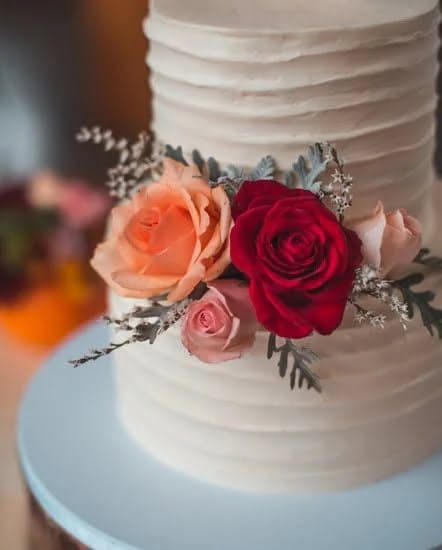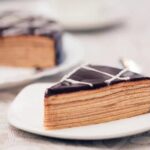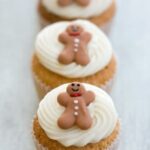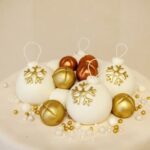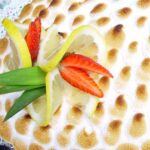Are you looking for a way to elevate your cake decorating skills? Look no further. In this article, we will delve into the art of creating the perfect decorating frosting for cakes.
Whether you’re a seasoned baker or just starting out, mastering the art of frosting can take your cake designs to the next level. From essential ingredients to step-by-step instructions, we’ll cover everything you need to know to create stunning cake decorations that will impress everyone.
Decorating frosting comes in various types, each with its own unique qualities and uses. Understanding the different types of frosting is crucial in achieving the desired look and texture for your cake decorations. With our comprehensive guide, you’ll become familiar with buttercream, royal icing, fondant, and more. We’ll explore their distinct characteristics and discuss when to use each type for optimal results.
To make the perfect decorating frosting for cakes, it’s important to start with the right ingredients. From butter and powdered sugar to flavorings and food coloring, we’ll identify the essential components needed to create a smooth and delicious frosting. Additionally, we’ll provide insights into how different ingredients contribute to the consistency and taste of the frosting. By mastering these fundamentals, you’ll be well on your way to becoming a cake decorating pro.
Essential Ingredients
Decorating frosting is an essential component of any beautifully crafted cake. Different types of frosting can be used to create unique and stunning cake decorations. However, regardless of the type of frosting, there are essential ingredients that are needed to make decorating frosting for cakes.
The key ingredients needed to make decorating frosting for cakes include butter, powdered sugar (also known as confectioner’s sugar), vanilla extract, and milk or heavy cream. Butter provides the base and richness for the frosting, while powdered sugar adds sweetness and texture. Vanilla extract enhances the flavor of the frosting, and milk or heavy cream helps achieve the desired consistency.
Buttercream frosting is one of the most popular types of decorating frostings used for cakes. It is made with butter, powdered sugar, vanilla extract, and a small amount of milk or heavy cream. This classic frosting is versatile and can be easily tinted with food coloring to achieve different colors for cake decorations.
Another common type of decorating frosting is royal icing, which is made from powdered sugar, meringue powder (or egg whites), and water. It dries into a hard finish, making it ideal for intricate designs and details on cakes.
| Ingredient | Description |
|---|---|
| Butter | Provides richness and flavor |
| Powdered Sugar | Adds sweetness and texture |
| Vanilla Extract | Enhances flavor |
| Milk or Heavy Cream | Achieves desired consistency |
Tools and Equipment
When it comes to frosting cake decorations, having the right tools and equipment can make a world of difference in achieving professional-looking results. Here are some essential tools and equipment that you will need to have on hand for decorating cakes with frosting:
- Offset Spatula: An offset spatula is a must-have tool for smoothly spreading frosting onto cakes and creating clean edges.
- Piping Bags and Tips: These are essential for creating intricate designs and patterns with your decorating frosting. Invest in a variety of piping tips to have options for different decorations.
- Bench Scraper: A bench scraper is useful for smoothing out frosting on the sides of the cake and creating sharp edges.
- Turntable: A turntable makes it easier to frost all sides of the cake evenly and allows for smooth, fluid motion while decorating.
- Cake Leveler: This tool ensures that your cake layers are perfectly level, providing a stable base for frosting and decorating.
- Parchment Paper or Wax Paper: These will come in handy when practicing piping techniques or creating delicate decorations that need to be transferred onto the cake.
In addition to these tools, having the right equipment is also crucial for successfully decorating cakes with frosting. Make sure you have access to a good quality stand mixer or hand mixer, as well as mixing bowls, measuring cups and spoons, and a sturdy work surface. It’s also helpful to have a few different types of cake pans on hand so you can create various sizes and shapes of cakes for decorating.
Overall, having the proper tools and equipment will set you up for success when working with decorating frosting for cakes. With the right items at your disposal, you’ll be well-prepared to tackle any cake decorating project with confidence.
Remember – Practice does make perfect. Be patient with yourself as you familiarize yourself more with these tools.
Step-by-Step Instructions
Making your own decorating frosting for cakes from scratch is easier than you might think. With just a few key ingredients and the right tools, you can create beautiful and delicious frosting to take your cake decorations to the next level. Follow these step-by-step instructions to create the perfect decorating frosting for your next cake masterpiece.
Ingredients
- Butter or shortening
- Confectioners’ sugar
- Vanilla extract
- Milk or heavy cream
Instructions
- Cream together the butter or shortening with an electric mixer until smooth.
- Add in the confectioners’ sugar gradually, mixing on low speed until fully combined.
- Pour in the vanilla extract and mix well.
- Slowly add in the milk or heavy cream, a little at a time, until the desired consistency is reached. Be careful not to add too much liquid, as this can make the frosting too runny.
Once you have followed these steps, you will have a basic decorating frosting that can be used for piping borders, creating rosettes, and adding other decorative touches to your cake. From here, you can customize the flavor and color of your frosting using different extracts, food coloring gels, or flavored syrups to suit your specific cake design.
With these step-by-step instructions, you’ll be well on your way to creating beautiful and delicious decorating frosting for all of your cake decorating needs.
Tips and Tricks
When it comes to decorating cakes with frosting, achieving a smooth and flawless finish is essential. Here are some tips and tricks to help you master the art of frosting cake decorations:
1. Consistency is Key: The key to achieving smooth frosting is getting the right consistency. If the frosting is too thick, it will be difficult to spread, and if it’s too thin, it will not hold its shape. To achieve the perfect consistency, add small amounts of liquid or powdered sugar until you reach the desired texture.
2. Crumb Coat: Before applying the final layer of frosting, it’s important to apply a thin layer of frosting known as a crumb coat. This initial layer helps seal in any crumbs and creates a smooth base for the final layer of frosting.
3. Use an Offset Spatula: An offset spatula is a baker’s best friend when it comes to frosting cakes. The angled blade allows for easy spreading and smooth edges, making it much easier to achieve a professional-looking finish.
In addition to these tips, remember that practice makes perfect when it comes to decorating cakes with frosting. Don’t be afraid to experiment with different techniques and have fun creating beautiful cake decorations.
| Tips for Achieving Smooth Frosting | Details |
|---|---|
| Consistency | The importance of achieving the right consistency for smooth frosting |
| Crumb Coat | The benefits of applying a crumb coat before the final layer of frosting |
| Offset Spatula | The usefulness of an offset spatula in achieving smooth edges and easy spreading |
Color and Flavor Options
When it comes to decorating cakes, the color and flavor options for frosting are endless. Adding color to your frosting can help bring your cake design to life and complement the overall theme or occasion. From vibrant rainbow shades to pastel hues, there are countless possibilities for creating visually stunning decorations.
In addition to color, experimenting with different flavor options can elevate the taste of your frosting and enhance the overall cake experience. Whether you prefer classic vanilla or adventurous citrus flavors, there is a flavor option to suit every preference.
To achieve a wide range of colors for your decorating frosting, consider using gel food coloring. Gel food coloring is more concentrated than liquid food coloring, allowing you to achieve vibrant shades without compromising the consistency of your frosting.
Additionally, you can mix different colors together to create custom shades that perfectly match your cake design or theme. When it comes to flavor options, extracts such as vanilla, almond, lemon, and even coffee can be added to the frosting to infuse delicious flavors into your cake decorations.
With the endless color and flavor options available for decorating frosting, it’s important to consider the overall design and theme of the cake. For example, a whimsical birthday cake may call for bright and playful colors like pink, blue, and yellow with sweet fruity flavors such as strawberry or raspberry.
On the other hand, a sophisticated wedding cake design may benefit from soft pastel shades like blush pink or mint green with delicate floral flavors such as lavender or rosewater. No matter the occasion or theme, exploring different color and flavor options for decorating frosting allows you to unleash your creativity and personalize each cake creation.
Techniques for Decorating
Piping Techniques
Piping is a popular technique for creating beautiful cake decorations using frosting. To achieve this, you will need a piping bag and various tips with different shapes and sizes. For intricate designs, use a small round tip for fine lines or a star tip for creating rosettes and borders. Practice on a separate surface before piping directly onto the cake to ensure precision and control.
Spatula Painting
Spatula painting is a unique technique that involves using an offset spatula to create beautiful designs on the cake’s surface. Simply spread a thin layer of frosting onto the cake and use the spatula to create patterns and textures. This technique allows for more artistic freedom and can result in stunning, hand-painted effects.
Stencil Designs
Using stencils is another way to add intricate designs to your cake with decorating frosting. Place the stencil over the frosted cake, then gently spread colored icing over it with an offset spatula or palette knife. Carefully lift the stencil to reveal the design. This method allows for detailed and consistent patterns on the cake’s surface.
Experimenting with these various techniques can help you create unique and visually appealing decorations for your cakes. Whether you’re aiming for elegant floral motifs, whimsical patterns, or modern abstract designs, mastering these techniques will elevate your cake decorating skills to the next level.
Troubleshooting
Not Holding Its Shape
One common issue when making decorating frosting for cakes is that it does not hold its shape when piped onto the cake. This can be frustrating, especially when trying to create intricate designs. One of the main reasons for this is that the frosting may be too soft.
To fix this issue, try adding more powdered sugar to stiffen the consistency of the frosting. Another solution is to refrigerate the frosting for a short while before using it, which will help it hold its shape better when piped.
Grainy Texture
Another problem that may arise when making decorating frosting for cakes is a grainy texture. This typically happens when the powdered sugar is not fully dissolved into the mixture, leaving a gritty feel to the frosting. To remedy this issue, ensure that you sift the powdered sugar before adding it to the mixture to prevent lumps from forming. Additionally, mixing the frosting for an extended period can also help smooth out any graininess.
Color Bleeding
When using colored decorating frosting on cakes, one common issue is color bleeding. This occurs when vibrant colors bleed into lighter ones or melt into each other over time.
To avoid this problem, make sure to use gel food coloring instead of liquid food coloring as it has a thicker consistency and will not cause bleeding. It’s also important to allow each color layer of frosting to set before adding another color on top to prevent bleeding and maintain clean lines in your designs.
Overall, troubleshooting these common issues and knowing how to fix them can help ensure that your decorating frosting turns out perfect every time. With these tips in mind, you’ll be able to create beautiful and flawless cake decorations with ease.
Conclusion
In conclusion, decorating frosting is a versatile and essential component for creating beautiful and delicious cakes. Whether you are a beginner or an experienced baker, understanding the different types of frosting, essential ingredients, tools and equipment, as well as step-by-step instructions is crucial to achieving professional-looking cake decorations. By following the tips and tricks provided in this article, you can elevate your cake decorating skills and impress your friends and family with stunning designs.
It’s important to remember that practice makes perfect when it comes to mastering the art of decorating frosting. Don’t be afraid to experiment with different color and flavor options to suit your unique cake designs.
Additionally, by exploring various techniques for using the frosting to create intricate decorations, you can unleash your creativity and take your cake decorating to the next level. Remember that troubleshooting common issues and mistakes when making decorating frosting is also part of the learning process, so don’t get discouraged if things don’t go perfectly the first time.
The key takeaway from this article is that making decorating frosting for cakes doesn’t have to be intimidating. With the right ingredients, tools, and knowledge of techniques, you can create stunning cakes that look as good as they taste. So why not start experimenting with your own decorating frosting creations today? Let your imagination run wild and enjoy the endless possibilities of creating beautiful cake decorations that will be sure to impress everyone at your next celebration.
Frequently Asked Questions
What Frosting Is Best for Decorating Cakes?
The best frosting for decorating cakes is typically buttercream frosting, as it holds its shape well and is easy to work with. It can also be easily colored and flavored to suit any design.
How Do You Make Frosting Better for Decorating?
To make frosting better for decorating, you can adjust the consistency by adding more powdered sugar for stiffer frosting or a little milk or cream for smoother frosting. Making sure the frosting is at the right temperature can also make it easier to work with.
What Frosting Do Professionals Use for Cakes?
Professionals often use Swiss meringue buttercream or Italian meringue buttercream for decorating cakes. These frostings are known for their smooth texture, stability, and ability to hold intricate designs without melting. They are versatile and can be flavored in many different ways to complement various cake flavors.

Welcome to our cake decorating blog! My name is Destiny Flores, and I am the proud owner of a cake decorating business named Cake Karma. Our mission is to provide delicious, beautiful cakes for all occasions. We specialize in creating custom cakes that are tailored specifically to each customer’s individual needs and tastes.

